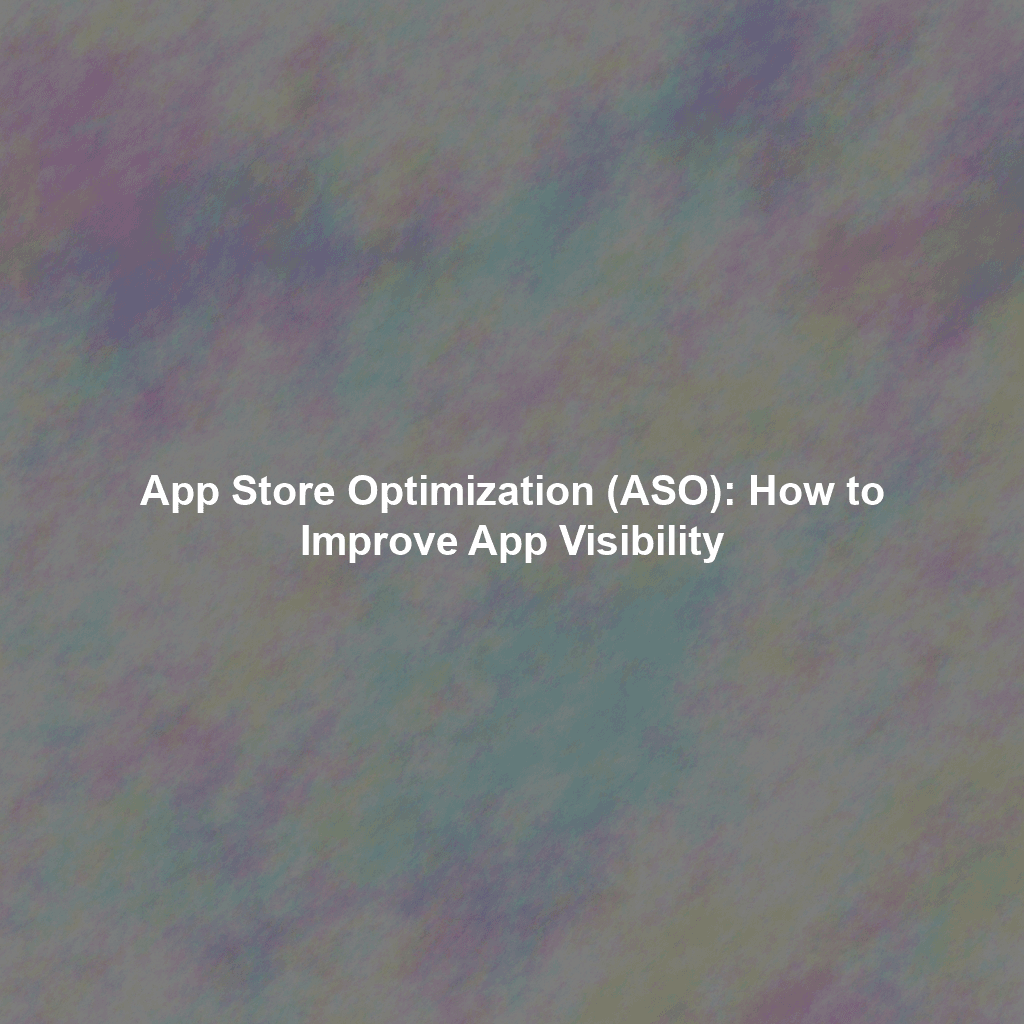Why ASO Matters: Beyond Simple Download Counts
The strategic value of ASO extends beyond raw download figures. Its core objective is to connect with the *right* users—individuals genuinely interested in your app’s specific features and value. Improved visibility within the app store ecosystem yields key strategic advantages for sustained app growth:
- Increased Organic Downloads: Effective ASO allows you to reach a broader, more relevant audience without primary reliance on costly paid advertising—a cornerstone of sustainable growth.
- Acquisition of Higher Quality Users: ASO helps you connect with users actively searching for apps that meet their specific needs, resulting in more engaged and loyal long-term users.
- Reduced User Acquisition Costs: Organic downloads, driven by effective ASO, offer a more cost-efficient path to user acquisition compared to the often-substantial expenses of paid campaigns.
- Improved Brand Awareness and Recognition: Enhanced visibility within app stores naturally increases your brand’s recognition and strengthens its credibility in a competitive landscape.
- Foundation for Sustainable Growth: A well-executed ASO strategy establishes a stable base for long-term app growth, reducing dependence on fluctuating paid marketing budgets.
The Core Tenets of ASO: Optimizing for Discovery and Conversion
A comprehensive ASO strategy employs a dual approach: optimizing your app store listing for discoverability—achieving higher rankings in relevant searches—and optimizing for conversion—persuading users to download once they find your app. Let’s examine the key elements of each:
1. Keyword Research: Understanding User Search Intent
Keywords are fundamental to ASO success. To optimize effectively, you must understand the specific terms your target audience uses when searching for apps like yours. Effective keyword research involves:
- Brainstorming: Establishing the Basics
Begin by listing all relevant words and short phrases describing your app’s features, functionality, and target audience. Consider the problem your app solves and the terms users might type into the app store search bar. Explore related concepts, synonyms, and alternative phrasings. - Competitive Analysis: Learning from Rivals’ Strategies
Analyze the keywords your direct competitors use in their app store listings and the terms for which they rank highly. Pay attention to their language in titles, subtitles (iOS), short descriptions (Android), and full descriptions. Tools like Sensor Tower, data.ai (formerly App Annie), and Mobile Action offer insights into competitor keyword strategies and performance. - Leveraging Specialized Keyword Research Tools: In-Depth Data Analysis
Utilize dedicated ASO keyword research tools to identify high-volume, low-competition keywords. These tools provide data on search volume, keyword difficulty, and related terms. Effective options include:- Sensor Tower: A comprehensive ASO platform with robust keyword research and analytics.
- data.ai (formerly App Annie): Offers extensive app market data, including keyword rankings and download estimates.
- Mobile Action: Provides keyword tracking, competitive analysis, and ASO optimization tools.
- App Radar: A user-friendly ASO tool with keyword research, app tracking, and review management.
- Harnessing Long-Tail Keywords: Targeting Niche Audiences
Recognize the potential of long-tail keywords—longer, more specific phrases targeting niche audiences. While individual search volume may be lower, collectively they can drive significant, highly qualified traffic. For example, instead of “photo editor,” consider “photo editor with vintage filters for Instagram” or “easy photo editor for travel bloggers to remove backgrounds.”
2. On-Metadata Optimization: Crafting Compelling App Store Listings
On-metadata elements—text and visuals in your app store listing—are crucial for ranking and conversion. Key elements include:
- App Title: The Initial Impact
Your app title is the first thing users see in search results. Include your most important keyword(s) concisely and readably. Apple allows 30 characters; Google Play, 50. Prioritize relevant keywords at the beginning of your title. - Subtitle (iOS) / Short Description (Android): Your Value Proposition
The subtitle (iOS) and short description (Android) briefly summarize your app’s key features and benefits. Highlight your unique value proposition concisely. Optimize with relevant keywords, prioritizing clarity. iOS: 30 characters; Android: 80 characters. - Keyword Field (iOS): The Hidden Advantage
The iOS keyword field allows you to specify relevant keywords, separated by commas. Avoid repeating title or subtitle keywords. Maximize this 100-character space with high-volume and long-tail keywords. - App Description: Telling Your App’s Story
The app description provides a detailed overview of features, benefits, and target audience. Tell your app’s story, highlight unique selling points, and address user concerns. Optimize with relevant keywords while prioritizing readability and engagement. Use formatting (headings, bullet points) for scannability. Include a clear call to action to download.
3. Off-Metadata Optimization: Building Authority and Credibility
Off-metadata factors—elements outside your listing—influence ranking and visibility:
- Download Volume: The Popularity Metric
Higher download volume significantly improves ranking. While direct control is impossible, ASO, marketing, and advertising efforts can influence it. - Ratings and Reviews: Social Proof
Positive ratings and reviews build trust and increase conversion rates. Encourage users to leave reviews at opportune moments. Respond promptly and professionally to all feedback. - Backlinks: External Validation
Links from other websites to your app store listing can improve ranking, especially in Google Play. Promote your app on your website, blog, and social media. Reach out to relevant websites for reviews or mentions.
4. Creative Assets: Visual Appeal
Your app icon, screenshots, and video preview are crucial for capturing attention and driving downloads:
- App Icon: Your Visual Identity
Your app icon should be eye-catching, memorable, and relevant. Use a simple, clean design that stands out. Test different designs for optimal performance. - Screenshots: Showcasing Value Visually
Use high-quality screenshots highlighting key features and UI. Add captions explaining each screenshot. Optimize for different screen sizes. - Video Preview: Engaging Users Dynamically
A short, compelling video can showcase your app’s value. Highlight key features and benefits with visuals, music, and narration to encourage downloads.
ASO: An Ongoing Process of Iteration
ASO is not a one-time task but a continuous process of monitoring, analysis, and optimization. Regularly track your app’s performance, keyword rankings, and download data. Experiment with keywords, creatives, and descriptions. Stay updated on ASO trends and best practices.
Key Performance Indicators (KPIs) to Track:
- Keyword Rankings
- Impressions
- Page Views
- Conversion Rate (Listing to Download)
- Download Volume
- Uninstall Rate
- User Retention
Conclusion: Mastering ASO for App Store Success
App Store Optimization is vital for any successful mobile marketing strategy. By understanding ASO principles and implementing a well-defined plan, you can significantly improve visibility, attract qualified users, and drive sustainable growth. Focus on both discovery and conversion, and continuously optimize based on data and user feedback. Strategic dedication to this process unlocks your app’s full potential in the competitive app marketplace.
 Skip to content
Skip to content

